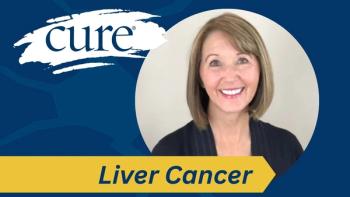
Rubraca Approved for Advanced Ovarian Cancer
The FDA approved Rubraca for patients with advanced ovarian cancer who already had two or more lines of therapy.
Rubraca (rucaparib) gained U.S. Food and Drug Administration (FDA) approval for the treatment of patients with BRCA-positive advanced ovarian cancer who have received at least two prior lines of chemotherapy, according to Clovis, the manufacturer of the PARP inhibitor.
The approval is based on data from 106 patients across two trials, including the ARIEL2 study. In a pooled analysis of data from the studies, the objective response rate (ORR) was 54 percent with Rubraca.
"Today's approval is another example of the trend we are seeing in developing targeted agents to treat cancers caused by specific mutations in a patient's genes," Richard Pazdur, M.D., director of the Office of Hematology and Oncology Products in the FDA's Center for Drug Evaluation and Research and acting director of the FDA's Oncology Center of Excellence, said in a statement. "Women with these gene abnormalities who have tried at least two chemotherapy treatments for their ovarian cancer now have an additional treatment option."
The 106 patients comprised 42 patients from a phase 1/2 study (
The phase 1/2 trial included only platinum-sensitive patients, while ARIEL2 enrolled patients who were platinum sensitive, resistant, or refractory. The group of 106 patients had a median number of prior therapies of three and a median age of 59 years.
The starting dose of Rubraca for all patients was 600 mg twice daily. The primary outcome measures for both studies was investigator-assessed ORR and duration of response (DOR) per RECIST version 1.1.
In the pooled analysis of the two trials, the complete response (CR) rate was 9 percent and the partial response (PR) rate was 45 percent. The median DOR was 9.2 months. ORR rates were similar, regardless of whether patients had germline or somatic BRCA mutations, or mutations of the BRCA1 gene versus the BRCA2 gene. Progressive disease occurred in nine of the 106 patients.
Among the 42 patients in the phase 1/2 study, the ORR was 60 percent, which included a CR rate of 10 percent and a PR rate of 50 percent. The median DOR was 7.8 months.
In the ARIEL2 trial, the ORR was 50 percent, comprising a CR rate of 8 percent and a PR rate of 42 percent. The median DOR was 11.6 months.
“Ovarian cancer is one of the most difficult cancers to detect. For this reason, most women who develop ovarian cancer are diagnosed with advanced disease," said Sue Friedman, DVM, Executive Director of Facing Our Risk of Cancer Empowered. "There is a tremendous need for new ways to treat women with advanced ovarian cancer and ways to find those women who will respond to therapies such as PARP inhibitors. PARP inhibitors, like Rubraca, represent an exciting advancement for appropriate patients."
The safety analysis for Rubraca included 377 patients from the two studies who received Rubraca at 600 mg twice daily. The most common grade 3/4 adverse events (AEs) were anemia/decreased or low hemoglobin (25 percent), fatigue/asthenia (11 percent) and increased ALT/AST (11 percent).
Eight percent of patients discontinued treatment due to AEs associated with Rubraca. There was one case of myelodysplastic syndrome.
Clovis is also examining Rubraca as a maintenance therapy in patients with high-grade serous or endometrioid epithelial ovarian, primary peritoneal, or fallopian tube cancer in the phase 3 ARIEL3 trial (
"NOCC commends Clovis Oncology for its commitment to bringing a new treatment option to women living with ovarian cancer, the deadliest cancer of the female reproductive system. All too often, women are diagnosed when the disease is far advanced, leaving them with few viable treatment options,” said David Barley, Chief Executive Officer, National Ovarian Cancer Coalition. “The development and FDA approval of therapies for use in third-line is a promising step forward for the tens of thousands of women who will battle ovarian cancer in their lifetime."




